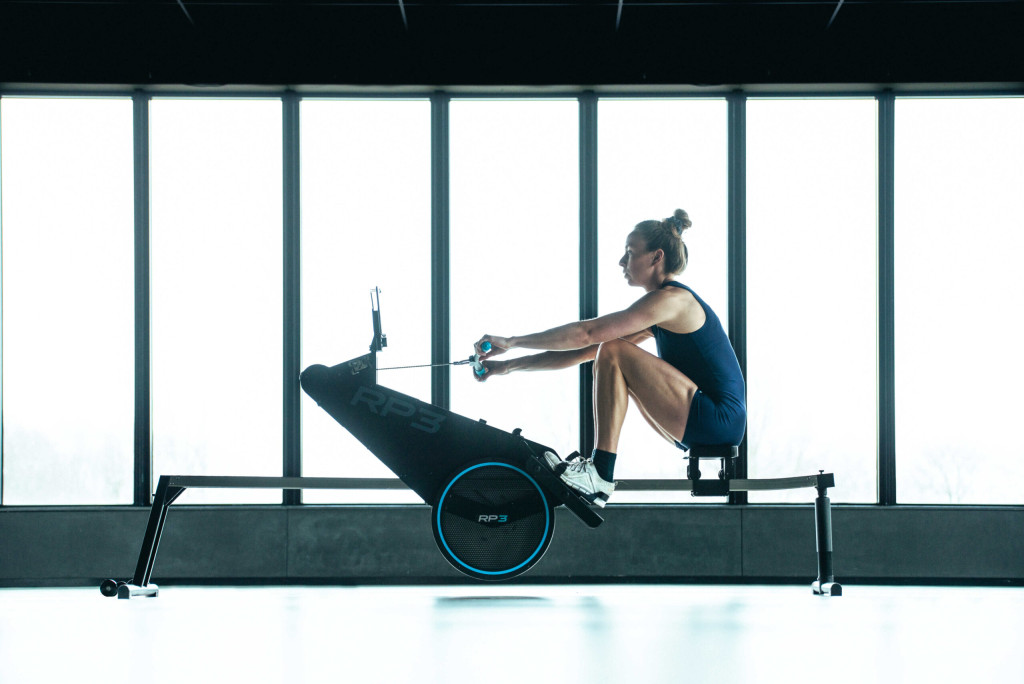Best low-impact cardio options for home
Discover 5 effective low-impact cardio options for home workouts that protect your joints while boosting fitness. Transform your health journey with these sustainable exercises for
Yes, rowing on a quality rowing machine provides an excellent foundation for both strength and cardio fitness at home. Rowing engages approximately 86% of your muscles while delivering an effective cardiovascular workout, making it one of the most efficient full-body exercises available. The stroke movement works major muscle groups including legs, core, back, and arms while elevating heart rate and burning calories. For most home fitness goals, rowing alone can deliver substantial results, though some targeted supplementary exercises may help create a truly comprehensive fitness routine.
Rowing is remarkably effective as a primary home workout for both strength and cardiovascular fitness. Unlike many other fitness machines that focus primarily on either strength or cardio, rowing machines deliver both elements simultaneously. The rowing stroke combines resistance training with aerobic exercise, making it exceptionally time-efficient.
For most people seeking general fitness, a quality rowing machine provides sufficient stimulus for building moderate strength, enhancing endurance, and improving cardiovascular health. The pushing motion with your legs during the drive phase offers resistance training benefits, while the continuous nature of rowing elevates heart rate for effective cardio conditioning.
However, the completeness of a rowing-only routine depends on your specific fitness goals. If you’re aiming for significant muscle hypertrophy (size gains) or sport-specific performance, you might benefit from supplementary exercises. Similarly, if you have particular mobility concerns, adding targeted stretching or stability work can be valuable.
Rowing activates approximately 86% of your body’s muscles during each stroke, making it one of the most comprehensive full-body exercises available. The rowing stroke can be divided into four phases, each engaging different muscle groups:
During the catch phase (starting position), your calves, hamstrings, and erector spinae muscles engage as you lean forward with bent knees. As you initiate the drive phase, your quadriceps, glutes, and calves power the leg push. Mid-drive, your back muscles (including rhomboids, latissimus dorsi, and trapezius) work as you swing back while your core stabilizes the movement. Finally, your biceps and rear deltoids activate as you pull the handle toward your torso.
Primary muscles worked during rowing include:
This extensive muscle recruitment makes rowing particularly efficient for those seeking a time-effective workout that builds functional strength throughout the body.
Rowing offers cardiovascular benefits that compare favourably to running and cycling, often with additional advantages. From a cardio perspective, rowing delivers an exceptional calorie burn while placing significantly less stress on your joints.
In terms of calorie expenditure, vigorous rowing can burn between 400-800 calories per hour depending on intensity and body weight—comparable to running and often exceeding cycling at similar perceived effort levels. One Amsterdam-based rowing studio reports participants burning up to 1000 calories in an intense session.
Unlike running, rowing is non-impact, meaning it doesn’t create jarring forces on your knees, ankles, and hips. This makes rowing particularly valuable for those recovering from injuries or with joint concerns. Compared to cycling, rowing engages the upper body substantially more, providing a more balanced cardio workout.
Rowing also excels at developing cardio capacity through interval training. The ability to quickly increase and decrease intensity makes it ideal for HIIT workouts, which efficiently build cardiovascular fitness while saving time—perfect for home exercisers with busy schedules.
Rowing effectively builds functional strength and muscular endurance, though its muscle-building potential differs from traditional weightlifting. The resistance provided during the drive phase of rowing creates enough stimulus to develop lean muscle, particularly for beginners and intermediate exercisers.
The leg drive in rowing offers substantial resistance training for your quadriceps, hamstrings, and glutes—often the largest muscle groups in your body. Similarly, the pulling motion engages your back muscles, which respond well to the high-repetition resistance. This combination develops functional, useful strength rather than isolated muscle bulk.
For those new to structured exercise, rowing can produce noticeable muscle definition and strength gains in the first few months. However, due to the relatively fixed resistance (compared to progressively increasing weights in strength training), there may eventually be diminishing returns for significant muscle growth.
If your goal includes substantial muscle hypertrophy (size increase), you might need to supplement with higher-resistance training. However, for general fitness, toning, and functional strength that serves everyday activities, rowing provides excellent muscle-building stimulus.
While rowing provides an excellent foundation for fitness, supplementing with a few targeted exercises creates a truly comprehensive programme. Even with rowing’s extensive muscle engagement, certain movement patterns and muscle groups benefit from complementary training.
Areas worth addressing with supplementary exercises include:
A well-rounded home fitness routine might include 3-4 rowing sessions weekly, supplemented with 1-2 sessions of bodyweight or light resistance exercises targeting these complementary movements. Even 10-15 minutes of these supplementary exercises can significantly enhance overall fitness outcomes.
The amount of rowing needed for fitness results depends on your goals, but most people can achieve significant benefits with 3-4 sessions weekly. For general fitness maintenance, even 20-30 minutes per session at moderate intensity provides valuable cardio and strength benefits.
For those seeking weight management and improved endurance, aim for 30-45 minute sessions 3-4 times weekly, mixing steady-state rowing with occasional interval work. This approach (known as polarized training) optimizes both fat-burning and cardiovascular development.
If you’re pursuing more ambitious fitness goals, following a structured programme is beneficial. Start with the weekly base training of at least 20-30 minutes steady state (low stroke rate 18-20) at 40-50% force. This can progressively increase to 45-60 minute sessions once or twice weekly as fitness improves.
As you advance, incorporate higher-intensity sessions using intervals or pyramid training (increasing then decreasing intensity throughout the workout). For example, try 2-4 sets of 5-15 minute intervals at 60-80% force with short recovery periods between.
Remember, consistency matters more than duration—regular shorter sessions yield better results than occasional lengthy workouts. As with any exercise programme, you should consult with your doctor before making significant changes to your fitness routine.
Dynamic rowing machines represent a significant advancement over traditional static models, offering biomechanical advantages that enhance training benefits while reducing injury risk. Unlike static machines where only the handle moves, dynamic rowing machines allow both the footplate and seat to move in response to your stroke, closely mimicking the physics of on-water rowing.
This movement pattern delivers several key advantages:
For home users, dynamic machines offer the benefit of a more comfortable rowing experience with less stress on joints and connective tissues. This translates to longer, more productive workouts with lower injury risk—particularly important for those with previous back concerns or those new to rowing.
The realistic feel of dynamic machines also helps maintain motivation and engagement with your rowing practice, as the fluid movement provides a more satisfying experience than the fixed resistance of traditional ergs.
Before committing to rowing as your primary home workout, consider several practical factors to ensure it aligns with your fitness needs and living situation. First, assess your space requirements—while many rowing machines have folding options, you’ll need adequate room for the full rowing motion (typically about 8 feet in length).
Learning proper technique is essential for safety and effectiveness. Expect a learning curve of several sessions to develop fluid technique. Poor form not only reduces workout effectiveness but can potentially lead to discomfort, particularly in the lower back.
Set realistic expectations about your progression timeline. Most people notice improved cardio capacity within 2-4 weeks of regular rowing, with strength gains becoming apparent after 4-8 weeks of consistent practice. However, mastering efficient technique that maximizes calorie burn and muscle engagement may take several months.
Consider your fitness goals carefully. Rowing excels at building overall fitness, improving cardiovascular health, enhancing muscular endurance, and supporting weight management. It’s less ideal for those primarily seeking maximum muscle size or sport-specific training for non-rowing activities.
At RP3 Rowing, we’ve designed our dynamic rowing machines to provide the most realistic and effective rowing experience possible. Our machines move with you, reducing strain while maximizing the science of rowing training effect of each stroke. Whether you’re seeking full-body fitness, low-impact cardio, or efficient strength development, our dynamic rowing technology delivers an exceptional home workout experience that truly addresses both strength and cardio needs in one comprehensive machine.
If you’re interested in learning more about the benefits of rowing, reach out to our team of experts today.
Discover 5 effective low-impact cardio options for home workouts that protect your joints while boosting fitness. Transform your health journey with these sustainable exercises for
Discover 5 effective low-impact exercises that protect your back while maintaining fitness intensity. Learn proper form techniques to strengthen your spine without risking injury.
Discover 5 effective home workouts that build strength without stressing your joints. Learn fluid movement techniques for pain-free exercise that delivers results while protecting your
Discover effective low-impact fitness strategies that build strength and cardio health without damaging your joints. Learn sustainable workout techniques for long-term health and injury prevention.
Discover 5 effective full-body low-impact workouts perfect for beginners that protect your joints while building strength and fitness. Start your sustainable exercise journey today!
Discover how low-impact fitness creates sustainable health benefits without joint pain. Learn 5 full-body workouts that deliver results while preserving your body for decades of
Discover why low-impact workouts deliver powerful fitness results without joint damage. Learn 6 key benefits and find the perfect exercise for sustainable daily fitness that
Discover why low-impact training on recovery days accelerates muscle repair, prevents injuries, and boosts long-term fitness gains. Learn optimal activities and avoid common recovery mistakes.
Discover why rowing machines deliver a complete workout while protecting your joints. Engage 85% of your muscles with zero impact stress—perfect for fitness enthusiasts of
Discover effective low-impact exercises perfect for returning to fitness after breaks or injuries. Learn 5 joint-friendly workouts that rebuild strength while preventing setbacks on your
Discover how rowing uniquely engages 85% of your muscles while enhancing flexibility in one efficient workout. Build strength and mobility simultaneously without stressing your joints.
Discover 5 low-impact routines that challenge your entire body without stressing your joints. Build strength and burn calories while protecting your knees, hips, and spine.
Discover how consistent low-impact activity delivers powerful physical and mental benefits without joint stress. Build fitness, reduce stress, and improve mobility through sustainable daily movement
Discover why rowing machines offer the ultimate low-impact, full-body workout for home fitness. Get 85% muscle engagement with minimal joint stress—perfect for all ages and
Discover how low-impact exercise protects your joints while delivering powerful fitness results. Learn 5 joint-friendly workouts that maintain mobility and prevent pain as you age.
Discover how to build sustainable low-impact fitness habits that protect your joints while delivering exceptional results. Learn proven strategies for lifelong exercise consistency without pain.

We will send you a personal quote as soon as possible.
As soon as the quote is ready, you will receive a link by email to order directly.
